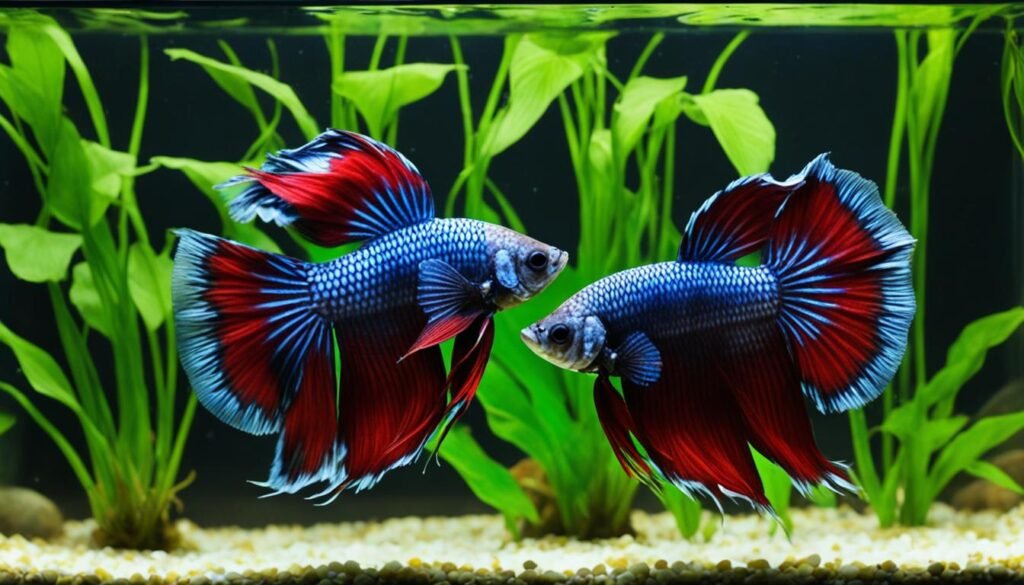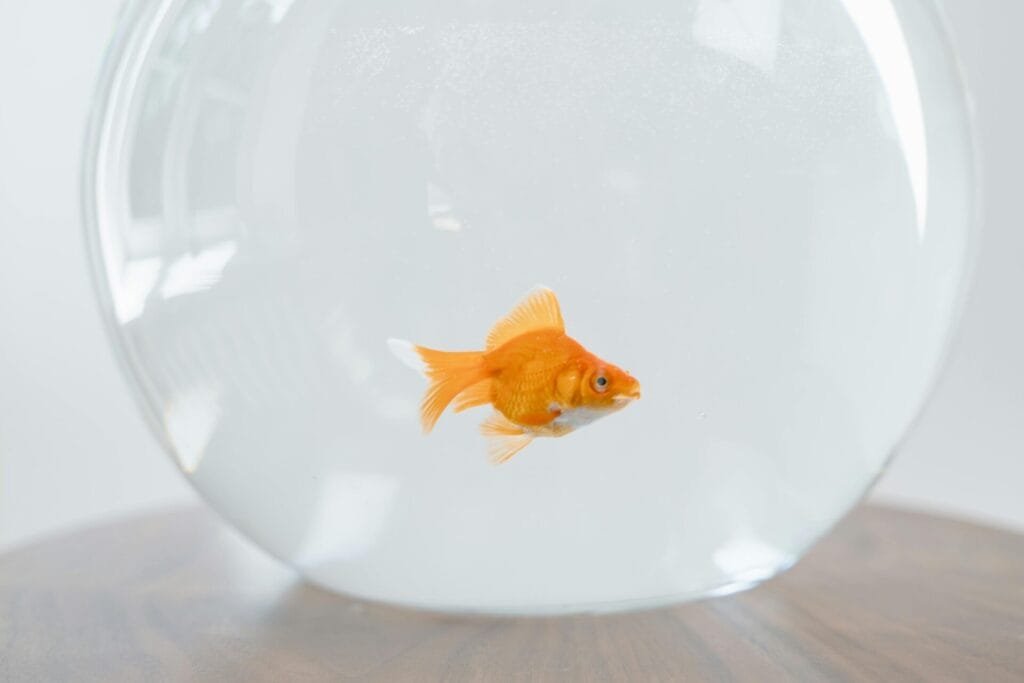Are you a betta fish enthusiast wondering if it’s possible to house 2 female bettas in the same tank? Well, you’ve come to the right place! Female betta fish compatibility is a topic of interest for many aquarists, and we’re here to provide you with the answers you’re looking for.
Tips for Creating a Successful Betta Sorority Tank
Creating a betta sorority tank can be a rewarding and fulfilling experience. In order to ensure a successful setup, it’s important to consider the following tips to maintain a peaceful betta sorority.
Choosing Compatible Tank Mates
When selecting tank mates for your female bettas, it’s crucial to choose fish that are compatible with bettas and can peacefully coexist. Look for species that are small, fast-moving, and are known to get along well with bettas. Some suitable tank mates for female bettas include:
- Harlequin Rasboras
- Neon Tetras
- Less colorful female guppies
These fish are known to have compatible temperaments and can add variety and liveliness to your betta sorority tank.
Proper Tank Setup
A successful betta sorority requires a well-equipped tank. Ensure that your tank is properly heated to maintain an ideal temperature range of 76-78 degrees Fahrenheit. Additionally, invest in a reliable filtration system to keep the water clean and oxygenated.
It’s important to provide enough space for your bettas to thrive. Aim for a tank size of at least 25 gallons to accommodate multiple female bettas. This will reduce aggression and territorial behavior.
Adding plenty of live or fake plants, as well as decorations for hiding spots, can help create a more peaceful environment for your betta sorority. This will provide the bettas with places to retreat and establish their territories, minimizing conflicts and stress.
Maintaining Water Quality
In order to ensure the health and well-being of your bettas, regular water changes are essential. Conduct weekly partial water changes of around 20-30% to minimize the accumulation of toxins and maintain optimal water quality.
Don’t forget to monitor the water parameters regularly using a reliable test kit. Ensure that the pH, ammonia, nitrite, and nitrate levels are within the appropriate range for bettas.
Feeding and Care
A well-balanced diet is crucial for the overall health and behavior of your bettas. Feed them high-quality betta pellets or flakes, and consider supplementing their diet with frozen or live foods such as brine shrimp or daphnia.
It’s important to feed your bettas small, frequent meals rather than one large serving to prevent overeating and digestive issues. Observe their feeding habits and adjust the amount of food accordingly to maintain their optimal body condition.
Additionally, check on your bettas regularly to ensure they are active, displaying vibrant colors, and are not showing signs of stress or illness.
Identifying Female Betta Fish and Understanding their Behavior
It can be quite challenging to determine the sex of betta fish, especially when they are still young. However, there are some key characteristics that can help us distinguish female bettas from their male counterparts.
Firstly, male bettas typically have longer and more colorful fins compared to females. Their elaborate finnage is one of their most striking features, while female bettas tend to have shorter fins.
Additionally, female bettas are generally smaller in size compared to males. This difference in size can be quite noticeable, with females having a more petite and streamlined appearance.
Another distinguishing feature of female bettas is their ovipositor. This small white dot near their ventral fin is a reproductive organ unique to female bettas.
While female bettas are typically less aggressive than males, it is important to note that they can still display territorial behavior. When housed together in a sorority tank, female bettas may establish a hierarchy to establish their dominance. This behavior is normal and should not be a cause for concern.
When introducing new female bettas to an existing sorority, it is crucial to do so slowly and with caution. This will allow the bettas to adjust to each other’s presence and minimize any potential conflicts. Monitoring their behavior closely during this acclimation period is essential to ensure a peaceful coexistence.
Overall, understanding the characteristics and behavior of female betta fish is vital for creating and maintaining a harmonious sorority tank.
Identifying Female Betta Fish
| Characteristics | Female Betta Fish | Male Betta Fish |
|---|---|---|
| Fins | Shorter and less elaborate | Longer and more colorful |
| Size | Smaller | Larger |
| Ovipositor | Present (small white dot near ventral fin) | Absent |
Maintaining a Peaceful Betta Sorority
Creating a betta sorority tank can be a rewarding experience, but it’s vital to maintain a peaceful environment for the fish. By providing a suitable habitat and closely monitoring the tank, you can ensure the well-being of your female bettas.
Regularly check for signs of aggression among the bettas. Look for torn fins, color fading, disinterest in food, or bettas resting at the bottom of the tank. These behaviors may indicate bullying or stress within the sorority. If aggression occurs, it’s crucial to take action to restore peace.
One option is to remove the bully from the tank temporarily. This can allow the remaining bettas to re-establish their hierarchy and reduce overall aggression. If a specific betta is consistently being targeted, consider moving her to a separate tank for her own safety.
Having a separate quarantine or hospital tank is also important for the well-being of your sorority. In the event of injury or illness, bettas can be isolated and treated without disrupting the harmony of the main tank.
Overcrowding can contribute to aggression in a betta sorority. Ensure that the tank is not overcrowded and that each betta has enough space to establish her territory. A general guideline is to provide a minimum of five gallons of water per betta in a sorority tank.
Proper nutrition is key to minimizing aggression. Ensure that the bettas are well-fed with a balanced diet of high-quality betta-specific pellets or flakes. A varied diet can also include frozen or live foods such as bloodworms or brine shrimp.
To summarize, maintaining a peaceful betta sorority requires close observation, timely intervention in case of aggression, proper tank conditions, and providing adequate space and nutrition for the bettas. Following these guidelines will lead to a harmonious community of female bettas.
| Tips for Maintaining a Peaceful Betta Sorority |
|---|
| Regularly check for signs of aggression: |
| – Torn fins |
| – Color fading |
| – Disinterest in food |
| – Resting at the bottom of the tank |
| Remove aggressive individuals: |
| – Temporarily remove the bully from the tank |
| – Consider moving consistently targeted bettas to a separate tank |
| Have a separate quarantine or hospital tank: |
| – Isolate and treat injured or sick bettas |
| Avoid overcrowding: |
| – Provide a minimum of five gallons of water per betta |
| Ensure proper nutrition: |
| – Feed high-quality betta-specific pellets or flakes |
| – Include varied diet with frozen or live foods |
Conclusion
In conclusion, it is possible to house two female betta fish together and create a harmonious betta sorority in the same tank. However, it is crucial to take into account certain factors to ensure their compatibility and well-being.
Tank size is of utmost importance to provide enough space for each betta fish to establish territories and minimize aggression. Keeping the tank heated within the ideal range of 76-78 degrees Fahrenheit and ensuring proper filtration are essential for their overall health and comfort.
In addition, the presence of plants and hiding spots in the tank is crucial to create a sense of security and reduce stress among the female bettas. Monitoring their behavior closely, especially during the initial introduction phase, is important to prevent any potential conflicts and establish a peaceful hierarchy.
By following these guidelines and providing a suitable environment, it is possible to house multiple female betta fish together and enjoy their beauty and companionship in one tank. Remember to choose compatible tank mates, maintain proper tank conditions, and be attentive to their behavior to ensure a successful betta sorority.


